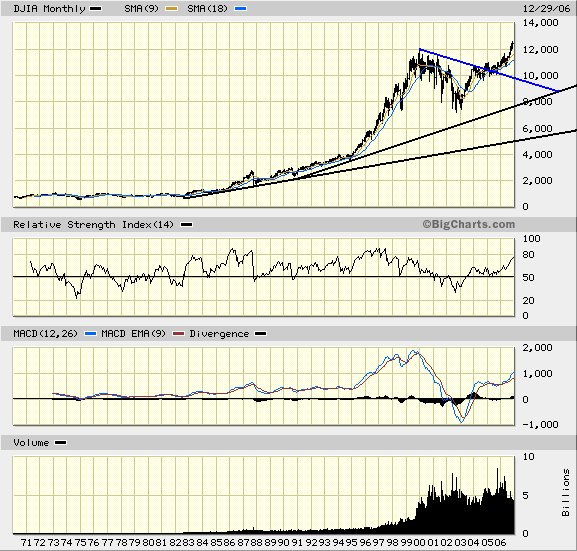First, let's look at what an index number represents. Although there are different ways to calculate index numbers, it is important to remember the numbers represent a change from an original or base value.
The number is not important. What is important is the percent change over time. This movement up or down gives you an idea of how the index is performing.
Is the Dow up or down? The index is calculated "on the fly" during trading to give investors a sense of direction to the market it represents. Notice, I said the index reflects "the market it represents," not "the market."
Most stock indexes, even those quoted as representing the total market, only reflect a portion of the actual market.
Here are the most popular indexes and the markets they reflect.
The Dow Jones Industrial Average is the oldest and most widely known index. It is also the most widely quoted index and, mistakenly, considered the market barometer.
Originally, it was a simple average of the stocks in the index, but thanks to stock splits, spin offs and other transactions, more sophistication is now required.
The Dow currently has only 30 stocks. However, each of these stocks represents one of the most influential companies in the U.S. and all have annual revenues in excess of $7 billion.
But the Dow is different than indexes like the S&P 500 in several ways.
One of the most important is that it is price weighted. That means the stocks in the Dow with higher share prices receive greater weighting in the average. The S&P 500, on the other hand, gives the most weight to stocks with the highest "float," or market value of shares that are publicly available.
Once you realize that, it's easy to determine how much influence each stock has on the Dow. It's a function of multiplying the share price of each member by a divisor generated by Dow Jones.
The weighting percentage can be seen here.
This means that because the Dow is the only major index that is price weighted, if a stock's price changes by $1, it has the same effect on the index regardless of the percent change for the stock. In other words, a $1 change for a $30 stock has the same effect as a $1 change for a $60 stock.
The Dow stocks represent about one quarter of the value of the total market, so in that sense it is a factor and big changes indicate investor confidence in stocks, however it does not represent small or mid-size companies at all.
 |
The S&P 500 is the most frequently used index by financial professionals as a representative of "the market." It includes 500 of the most widely traded stocks and leans towards the larger companies.
It covers about 70% of the market's total value, so in those terms it is much closer to representing the true market than the Dow.
The S&P 500 is a *market capitalization or market cap weighted index, as are almost all of the major indexes.
* Market capitalization or market cap is a way of measuring the size of a company and is calculated by multiplying the current stock price by the number of outstanding shares. A stock trading at $55 with 100,000,000 outstanding shares would have a market cap of $5.5 billion.
Weighting by market cap gives more importance to larger companies, so changes in Microsoft stock will have a greater impact than almost any other stock in the index.
Even though the S&P 500 is weighted toward larger companies, it is a more accurate gauge of the broader market than the Dow is.
Even though some of the talking heads on TV may emphasize the Dow, you will get a clearer picture of the market by focusing your attention on the S&P 500.
The Nasdaq Stock Market Composite is composed of all the stocks on the Nasdaq market - more than 5,000.
Although broad in coverage, the Nasdaq is heavily weighted to technology stocks. This is because it is a market cap weighted index and stocks like Microsoft and some of the other big technology companies influence the index.
Their influence and the population of small, speculative companies in the Nasdaq make the index more volatile than either the Dow or the S&P 500.
The Nasdaq obviously is not designed to represent "the market," however it does give you a good idea of where technology investors are going.
Indexes provide useful information including:
Please do not copy/paste this content without permission. If you want to use any of it on your website contact us via email at ![]() traderATfinancial-spread-betting.com (remove the AT and substitute by @).
traderATfinancial-spread-betting.com (remove the AT and substitute by @).